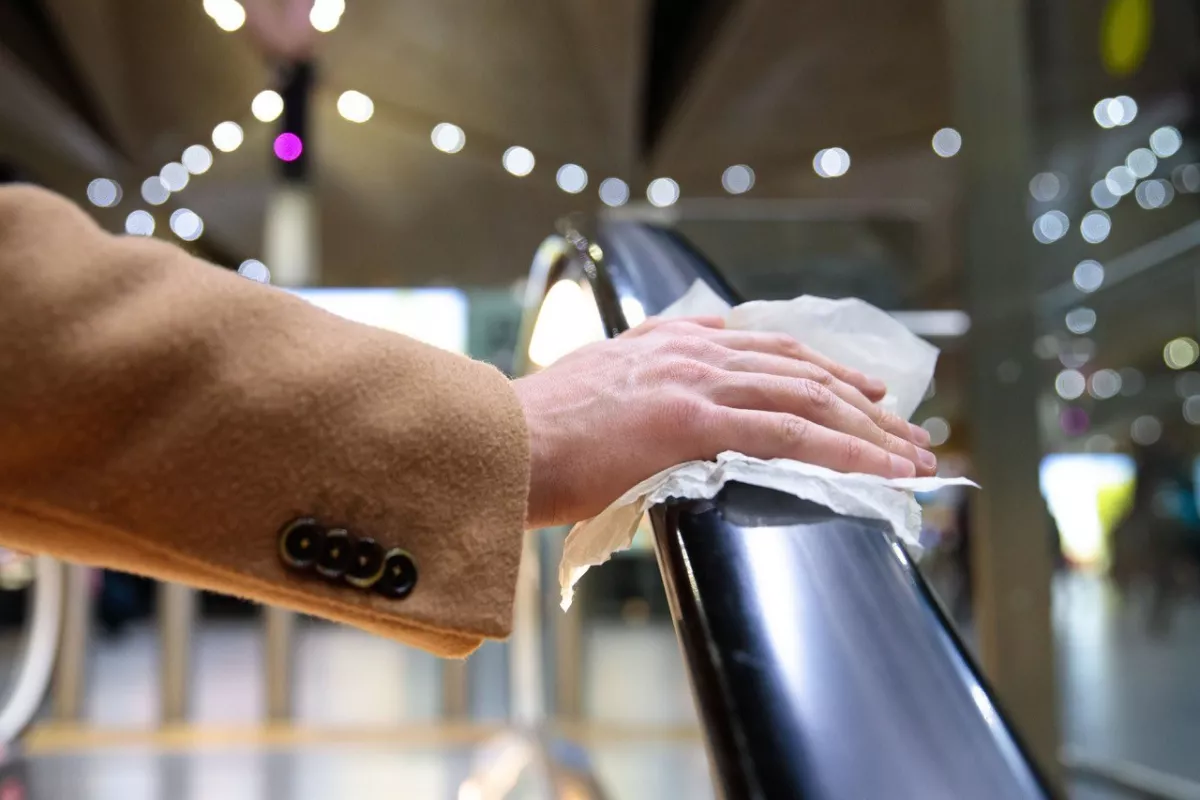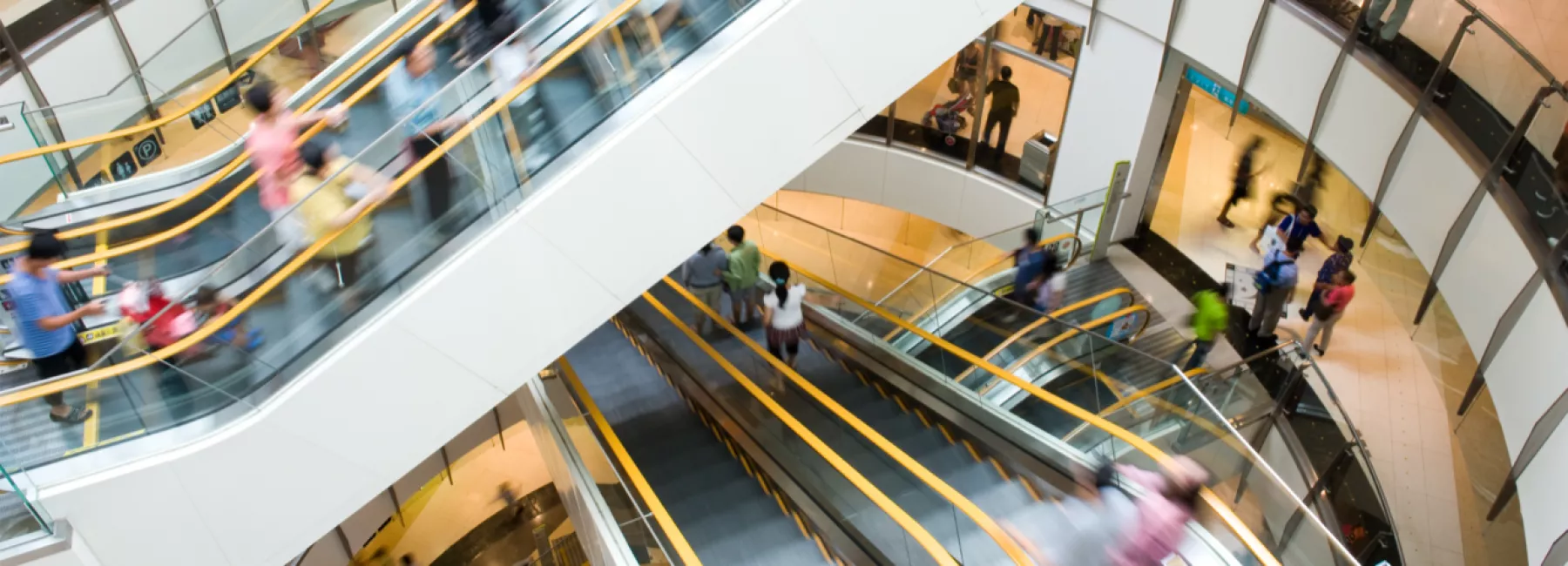Though the world appears to be opening up again, in an era where Amazon, eBay, and Otto have entered the arena, consumers can literally shop from anywhere, and at any time, forcing retailers to reinvent the shopping experience to stay competitive.
Today, shoppers expect more from retailers and mall owners in light of the COVID-19 pandemic. Evidence that health and safety are top of mind for consumers is everywhere, and retailers and mall owners need to give safety and cleanliness top priority if they want members of the public to return to the shop floor (The future of the mall, Deloitte).
Even with regular cleaning and sanitising regimes, high-touch surfaces such as handrails, elevator buttons, counter desks, and door handles, are increasingly prone to microbial growth and can be a vector for cross-contamination. Thus, it is understandable why people are hesitant to touch shared surfaces.

Which retail areas are challenging to keep clean?
Retailers might find the following information helpful, which identifies key areas that are susceptible to bacterial growth aside from the usual, and how to help alleviate the cleanliness anxieties of customers as they return to shopping centres.
Elevators
No one wants to share an elevator with bacteria, even if there's soothing elevator music playing in the background!
When entering a confined space with strangers, watching the doors close, as well as noticing broken or worn-out fixtures can send many people into a state of anxiety. Add in elevator etiquette and social cues, the ride up and down can determine whether the shopper will consider the next floor worthwhile or not.
Elevator manufacturers are finding new ways to combat this problem by replacing buttons with contactless panels and motion sensors, however could this alienate the less-tech savvy consumer?
Modern elevators with built-in antimicrobial materials can offer passengers added peace of mind by staying cleaner in-between cleans. Incorporated during the manufacturing process, antimicrobial protection can be added to all of the common touchpoints in an elevator, including buttons and handrails. What’s more, the technology will not wear off or wash away, ensuring 24/7 surface protection against degrading bacterial growth.
Escalator handrails
According to a study by the University of Arizona, escalator handrails are one of the dirtiest objects in a shopping mall. Test results found traces of food, E. coli, urine, mucus, faeces, and even blood on the handrails. It therefore comes as no surprise that people are reluctant to hold on to them when moving between floors.
With disorientation and loss of balance being a common safety risk on escalators, it is critical for shopping malls to encourage customers to utilise escalator handrails. One way to achieve this is by adding built-in antimicrobial protection into the rubber compound of the handrail. The presence of a technology that is continuously fighting bacterial growth could prove to be added peace of mind customers are looking for.

Divider walls
Often when we think of high-touch surfaces, we overlook divider walls in dressing rooms and commercial washrooms in favour of handles and toilet sinks, but that is not to say that they are not touched, especially in high-traffic areas. This is why laminate surfaces are a trending design choice for both aesthetics and durability and can be commonly seen in retail dressing rooms and public restrooms.
Since the pandemic hit, the dressing room was one of the first areas in retail to close. While the reasons for closure may have been unclear, the ability for bacteria to harbour on clothing items as they are shared and changed repeatedly throughout the day presents a valid motive. The heat from changing room spotlights can also contribute to bacterial growth.
Laminate surfaces for walls and partitions are low maintenance and easy to clean. They can also be supplied in large sheets which means there are fewer joints and cracks to collect bacteria in comparison to substitute material like tiles.
Nevertheless, surface bacteria from splashbacks and human contact can multiply every 20 minutes, making it necessary to clean and disinfect more frequently, thus employing more cleaners.
Laminates treated with built-in antimicrobial protection can enhance surface cleanliness by inhibiting bacteria growth 24/7. This proven technology delivers an ‘always-on’ line of defence, working to complement regular cleaning.
Why fit-out your retail store with built-in antimicrobial furniture and finishes?
The benefits for retailers to choose antimicrobial furnishing are endless. For ease, we have summarised the primary advantages below:
Stay cleaner and fresher in-between cleaning
Less likely to facilitate cross-contamination from surface to surface
Easier to keep clean
Less likely to prematurely degrade
Contain a technology that has a long history of safe use
Deliver added peace of mind for cleanliness-conscious consumers as they return to shopping centres


